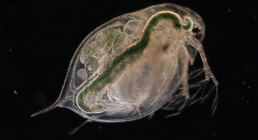
As the planet warms, the behavior and distribution of mosquitoes is expected to change. But it’s not just about the mosquitoes; it’s also about the…

As infectious disease modelers, one of the greatest challenges we face is in accurately reflecting the complexities of transmission, particularly human behavior. Important factors we…

Global shifts in temperature are yielding widespread impacts across diverse ecosystems and certain species are especially vulnerable to these changes. In particular, many reptiles –…

The introduced fungal pathogen Pseudogymnoascus destructans causes White-nose syndrome in North American bats, putting some populations at risk for extinction or extirpation. The severity of…

Early warning signals of critical transitions arise due to critical slowing down as a dynamical system approaches a tipping point. Extinction of a biological population…

Early warning signals for critical transitions have now been described from a number of ecological and geophysical systems. Most of these signals reflect a dynamical…

What is the shape of the probability distribution of population extinction times? We followed the dynamics of more than a thousand experimental populations of Daphnia…

Background Theory predicts that the logarithm of mean extinction times will scale with patch carrying capacity. Although previous results are consistent with this theory over…

Background Few experimental or observational datasets are available from which to learn about the stochastic properties of extinction. Particularly, there have been no large studies…






